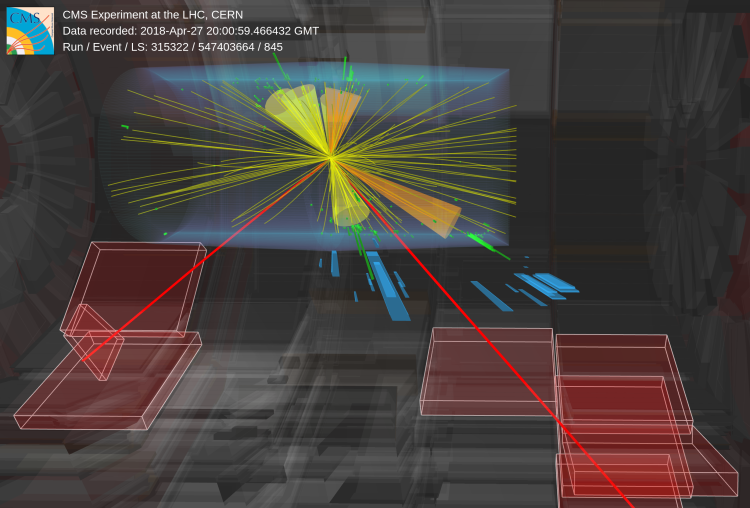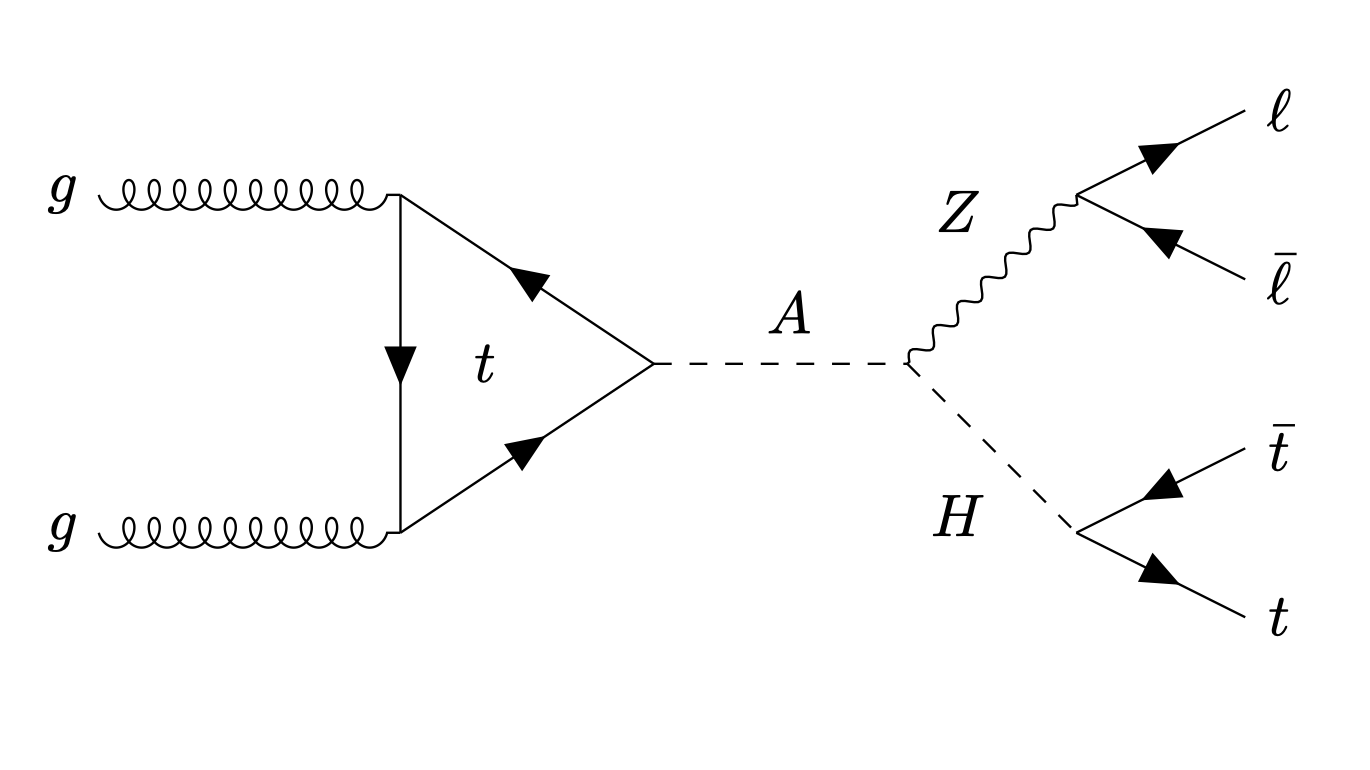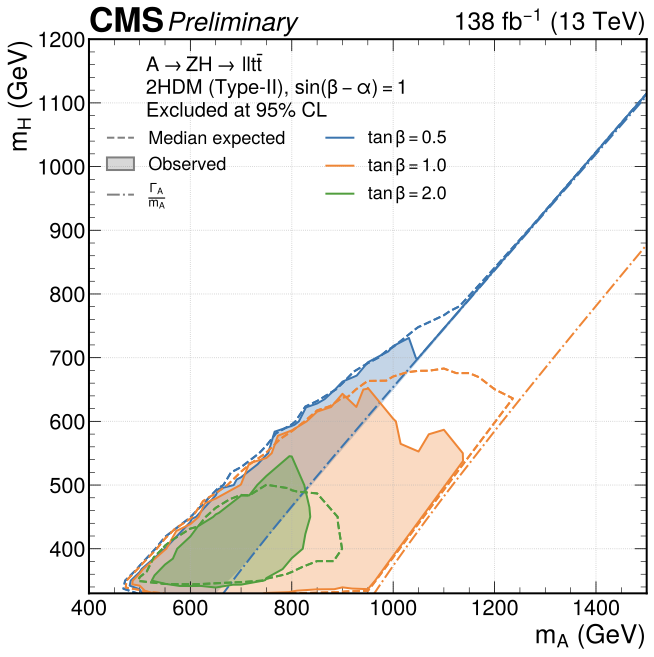
The Standard Model (SM) of particle physics has been a cornerstone of our understanding of the subatomic realm, providing precise predictions, many of which have been tested by the ATLAS and CMS experiments at the CERN LHC. However, despite its accuracy, the SM fails to explain some puzzling observations, such as the matter-antimatter imbalance, the origin of dark matter, and the mass of neutrinos, indications that there must exist physics processes “beyond the SM” (BSM). Enter the Two Higgs Doublet Model (2HDM), a modification of the SM that may help solve some of the puzzles. In addition to the SM Higgs boson discovered in 2012, this model predicts two “cousins”, dubbed A and H. In order to explain the matter-antimatter imbalance, these new Higgs bosons would need to be much heavier than the SM one. The hunt for these elusive particles led CMS physicists to go through all the events collected in the 2016–2018 period, searching for A bosons decaying into a H boson plus a Z boson, a process represented in Fig. 1.

Figure 1: Feynman diagram showing the production of the A boson and its decay into a SM Z boson and a BSM heavy Higgs boson H.
The analysis methods were developed and validated using samples of simulated events. In particular, emphasis was given to events where the Z boson decays into a pair of leptons (electrons or muons) and the hypothetical H boson decays into a pair of top quarks, which are then seen in the detector as six jets (clusters of particles flying close by). “After quite a lot of hard work preparing everything in much detail, we were very excited to see what Nature had placed in our measured events”, said Daniel Hundhausen, a PhD student at the University of Hamburg, who worked on this analysis. “This particular decay chain is named “the smoking gun” by theorists because it offers significant promise in corroborating the 2HDM predictions”, added Daniel.
A signal would show up as a deviation from the well-known SM “backgrounds” in the distributions of the A boson mass and of the Z transverse momentum. The red line in Fig. 2 shows an example of such an hypothetical deviation.

Figure 2: Number of events in bins reflecting the transverse momentum of the Z boson and the difference between the A and H boson masses. The red dashed line represents the A → ZH signal expected for a cross section of 25 fb while the histograms show the SM processes.
The researchers carefully scrutinized the data, searching for deviations from the SM predictions, but no “anomalous excess” was found. “We did not find any statistically significant BSM signal and, therefore, we could conclude that the A and H bosons (if they exist) do not have mass values inside certain ranges, explained Matteo Bonanomi, a postdoctoral researcher at the same university and also a member of the analysis team. Those “excluded ranges” are shown in Fig. 3. The gun has fired but we missed the target; we will continue shooting, to probe the 2HDM in regions beyond those already excluded.

Figure 3: The solid contours show the regions of A and H masses excluded by this analysis. The different contours correspond to different values of the tan beta parameter, which is unknown in the 2HDM and regulates the number of A bosons produced.
Read more about these results:
-
CMS Physics Analysis Summary (B2G-23-006): "Search for heavy neutral Higgs bosons A and H in the ttZ final state "
-
Display of collision events: CERN CDS
-
@CMSExperiment on social media: LinkedIn - facebook - twitter - instagram
- Do you like these briefings and want to get an email notification when there is a new one? Subscribe here

